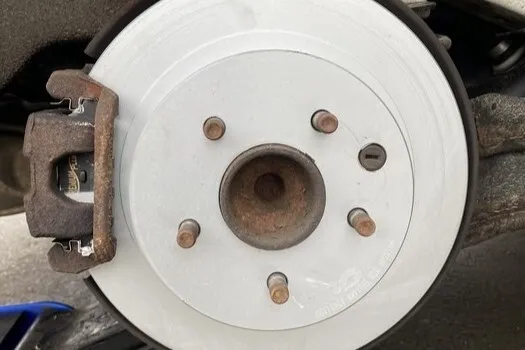What is the rule of thumb when replacing brake pads?
March 01, 2024Ensuring the proper maintenance and functionality of your vehicle's braking system is paramount for both safety and performance. Among the routine tasks associated with brake care, replacing brake pads stands out as a critical aspect. In this comprehensive guide, we will delve into the rule of thumb when replacing brake pads, covering essential considerations, step-by-step procedures, and tips for optimal results.
I. Understanding the Brake System:
Before delving into the replacement process, it's crucial to have a basic understanding of how the brake system works. In a typical disc brake setup, the brake pads are positioned on either side of the brake rotor. When the brake pedal is pressed, hydraulic pressure is applied, causing the brake pads to squeeze against the rotor, generating friction and subsequently slowing down or stopping the vehicle.
II. Recognizing Signs of Worn Brake Pads:
Knowing when to replace your brake pads is vital for maintaining optimal braking performance. Here are key indicators that your brake pads may be worn:
-
Brake Pad Thickness:
- Measure the thickness of the brake pad. Manufacturers often specify a minimum thickness. If the pads are worn close to or beyond this limit, replacement is necessary.
-
Audible Warning Signs:
- Squeaking, squealing, or grinding noises during braking can indicate worn brake pads. These sounds may be due to a metal indicator embedded in the pad, signaling that the pad material is low.
-
Visual Inspection:
- Remove the wheel to inspect the brake pads visually. If the pads appear thin or unevenly worn, replacement is advisable.
-
Brake Fluid Level:
- A sudden drop in brake fluid level may suggest worn brake pads, as the calipers extend further to compensate for pad wear.
III. The Rule of Thumb for Brake Pad Replacement:
-
Mileage and Time:
- A common rule of thumb is to replace brake pads every 30,000 to 70,000 miles, but this can vary based on driving habits, vehicle weight, and brake pad material. Additionally, consider the age of the pads, as they may deteriorate over time, even with low mileage.
-
Driving Conditions:
- Harsh driving conditions, such as frequent stop-and-go traffic, towing, or mountainous terrain, can accelerate brake pad wear. In such cases, it's advisable to inspect and replace brake pads more frequently.
-
Quality of Brake Pads:
- The quality of brake pads plays a crucial role in their lifespan. High-quality, OEM (original equipment manufacturer) or premium aftermarket brake pads often last longer and provide better performance than lower-quality alternatives.
IV. Step-by-Step Brake Pad Replacement:
-
Gather Materials:
- Ensure you have the necessary tools and materials, including a car jack, jack stands, lug wrench, C-clamp or brake caliper tool, and new brake pads.
-
Secure the Vehicle:
- Park on a level surface, engage the parking brake, and use a car jack to lift the vehicle. Secure it with jack stands before removing the wheel.
-
Remove the Caliper:
- Use the appropriate tools to remove the caliper, exposing the old brake pads. Be cautious not to damage the brake line during this process.
-
Inspect and Clean:
- Inspect the brake components for any signs of damage or wear. Clean the caliper and bracket to ensure smooth movement.
-
Replace Brake Pads:
- Remove the old brake pads and replace them with the new ones. Ensure proper alignment and fit.
-
Reassemble:
- Reattach the caliper, tighten the bolts to the manufacturer's specifications, and repeat the process for the other wheels.
-
Brake System Bleeding (if necessary):
- In some cases, brake system bleeding may be required to remove air from the brake lines and ensure proper brake fluid circulation.
V. Tips for Optimal Brake Pad Replacement:
-
Bedding Process:
- After replacing brake pads, follow a proper bedding-in process to ensure optimal performance. This involves a series of moderate stops to generate heat and transfer a layer of brake pad material onto the rotor.
-
Use High-Quality Brake Pads:
- Invest in high-quality brake pads, as they not only last longer but also contribute to better braking performance and reduced wear on other brake components.
-
Consider Professional Help:
- If you're unsure or uncomfortable with the replacement process, seek professional help. Brake systems are critical for safety, and improper installation can lead to serious consequences.
Maintaining a healthy braking system is essential for both driver and passenger safety. By adhering to the rule of thumb for brake pad replacement, recognizing signs of wear, and following a meticulous replacement process, you can ensure optimal braking performance and extend the lifespan of your vehicle's braking components. Regular inspection and proactive maintenance are key to a smooth and safe driving experience.


